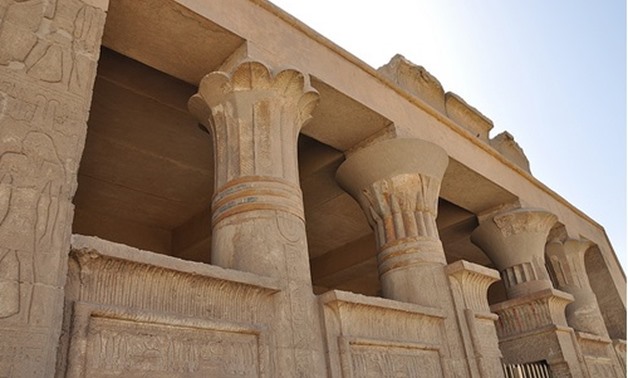http://www.egypttoday.com/Article/4/67302/Tuna-el-Gebel-excavation-findings-to-be-displayed-in-the
 FILE - Tuna el-Gebel Petosiris Tomb
FILE - Tuna el-Gebel Petosiris Tomb Tuna el-Gebel excavation findings to be displayed in the Egyptian Museum in Tahrir
By: Mustafa Marie
Wed, Mar. 20, 2019
CAIRO - 20 March 2019: The Egyptian Museum in Tahrir will organize an exhibition of artifacts discovered in Tuna el-Gabal region in Al-Minya, which is scheduled to kick off in April.
Director of the Egyptian Museum Mohammed Ali stated that the exhibition will include a collection of pottery vessels, statues of Alabaster and a number of statues of the goddess Sekhmet, in addition to a collection of different statues, which will be presented to the public, after the completion of the temporary exhibition currently held in the museum.
The temporary exhibition in the Egyptian Museum in Tahrir comprises the findings of the excavation works of the French-Italian mission, which was launched by Minister of Antiquities Khaled al-Anani on February 4 and is set to be complete by April 4.
The French-Italian mission's findings include 200 pieces found during excavation works in Umm al-Burajat area in Fayoum; the pieces were discovered over a span of thirty years starting 1988.
One of the most important monuments in the city is the cemetery of Petosiris, the cemetery of Azadura, the goddess of Thoth, the vaults and the Roman passageway.
Tuna el-Gebel was the necropolis of Khmun (Hermopolis Magna). It is located in Al-Minya Governorate.
The oldest monument in the area is the Boundary Stelae of Akhenaten, up in the cliffs, protected by a glass 'booth'. This makes it quite difficult to see properly, but prevents further erosion.
Later, catacombs were dug under the necropolis; these were used to store thousands of sacred mummies of falcons, baboons and ibises.
Near to the modern entrance to the catacombs is the tomb of the fourth century high priest Petosiris. This sepulcher is constructed to look like a temple, resembling Dendera. The outside is decorated in typical Late Period style, whereas the outer court is ornamented in a Greek style.
The tomb was constructed around the time of the conquest of Egypt by Alexander the Great, and seems to have been decorated like this to build relations with the new Ptolemaic rulers.
-- Sent from my Linux system.
No comments:
Post a Comment